Pritam Gundecha
FACTS About Building Retrieval Augmented Generation-based Chatbots
Jul 10, 2024Abstract:Enterprise chatbots, powered by generative AI, are emerging as key applications to enhance employee productivity. Retrieval Augmented Generation (RAG), Large Language Models (LLMs), and orchestration frameworks like Langchain and Llamaindex are crucial for building these chatbots. However, creating effective enterprise chatbots is challenging and requires meticulous RAG pipeline engineering. This includes fine-tuning embeddings and LLMs, extracting documents from vector databases, rephrasing queries, reranking results, designing prompts, honoring document access controls, providing concise responses, including references, safeguarding personal information, and building orchestration agents. We present a framework for building RAG-based chatbots based on our experience with three NVIDIA chatbots: for IT/HR benefits, financial earnings, and general content. Our contributions are three-fold: introducing the FACTS framework (Freshness, Architectures, Cost, Testing, Security), presenting fifteen RAG pipeline control points, and providing empirical results on accuracy-latency tradeoffs between large and small LLMs. To the best of our knowledge, this is the first paper of its kind that provides a holistic view of the factors as well as solutions for building secure enterprise-grade chatbots."
Teacher-Student Learning Paradigm for Tri-training: An Efficient Method for Unlabeled Data Exploitation
Sep 25, 2019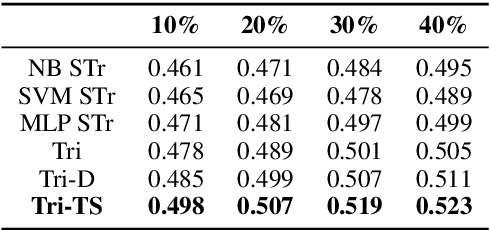
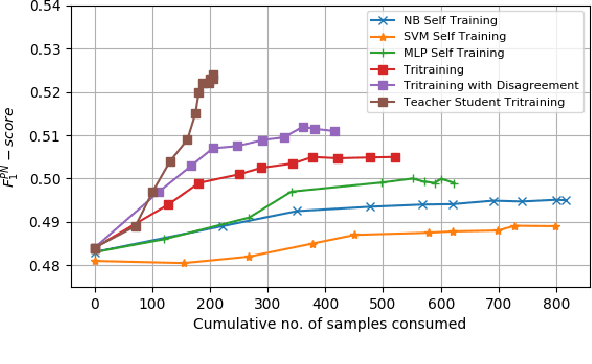
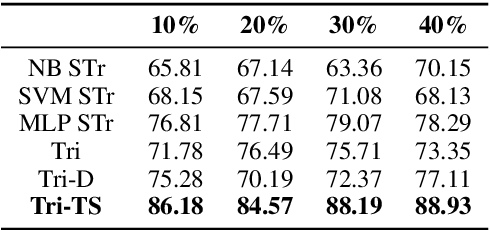
Abstract:Given that labeled data is expensive to obtain in real-world scenarios, many semi-supervised algorithms have explored the task of exploitation of unlabeled data. Traditional tri-training algorithm and tri-training with disagreement have shown promise in tasks where labeled data is limited. In this work, we introduce a new paradigm for tri-training, mimicking the real world teacher-student learning process. We show that the adaptive teacher-student thresholds used in the proposed method provide more control over the learning process with higher label quality. We perform evaluation on SemEval sentiment analysis task and provide comprehensive comparisons over experimental settings containing varied labeled versus unlabeled data rates. Experimental results show that our method outperforms other strong semi-supervised baselines, while requiring less number of labeled training samples.
Characterizing machine learning process: A maturity framework
Nov 12, 2018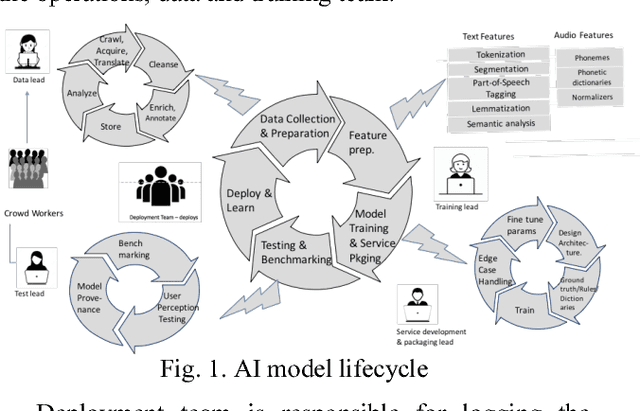
Abstract:Academic literature on machine learning modeling fails to address how to make machine learning models work for enterprises. For example, existing machine learning processes cannot address how to define business use cases for an AI application, how to convert business requirements from offering managers into data requirements for data scientists, and how to continuously improve AI applications in term of accuracy and fairness, and how to customize general purpose machine learning models with industry, domain, and use case specific data to make them more accurate for specific situations etc. Making AI work for enterprises requires special considerations, tools, methods and processes. In this paper we present a maturity framework for machine learning model lifecycle management for enterprises. Our framework is a re-interpretation of the software Capability Maturity Model (CMM) for machine learning model development process. We present a set of best practices from our personal experience of building large scale real-world machine learning models to help organizations achieve higher levels of maturity independent of their starting point.
"How May I Help You?": Modeling Twitter Customer Service Conversations Using Fine-Grained Dialogue Acts
Sep 15, 2017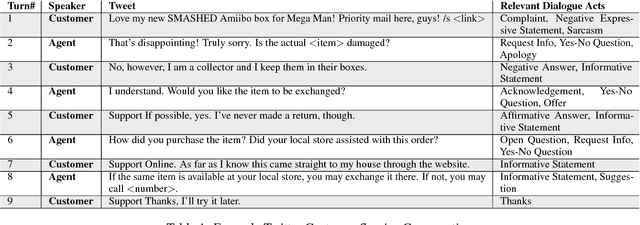
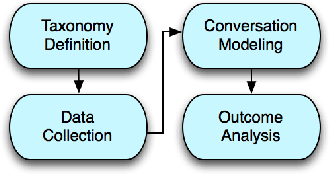
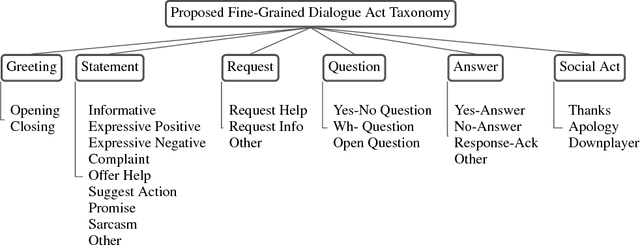
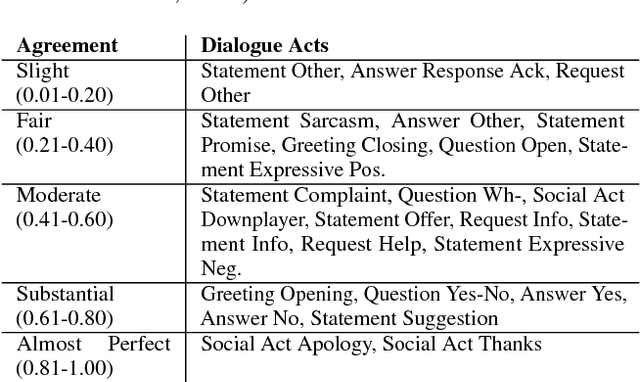
Abstract:Given the increasing popularity of customer service dialogue on Twitter, analysis of conversation data is essential to understand trends in customer and agent behavior for the purpose of automating customer service interactions. In this work, we develop a novel taxonomy of fine-grained "dialogue acts" frequently observed in customer service, showcasing acts that are more suited to the domain than the more generic existing taxonomies. Using a sequential SVM-HMM model, we model conversation flow, predicting the dialogue act of a given turn in real-time. We characterize differences between customer and agent behavior in Twitter customer service conversations, and investigate the effect of testing our system on different customer service industries. Finally, we use a data-driven approach to predict important conversation outcomes: customer satisfaction, customer frustration, and overall problem resolution. We show that the type and location of certain dialogue acts in a conversation have a significant effect on the probability of desirable and undesirable outcomes, and present actionable rules based on our findings. The patterns and rules we derive can be used as guidelines for outcome-driven automated customer service platforms.
 Add to Chrome
Add to Chrome Add to Firefox
Add to Firefox Add to Edge
Add to Edge